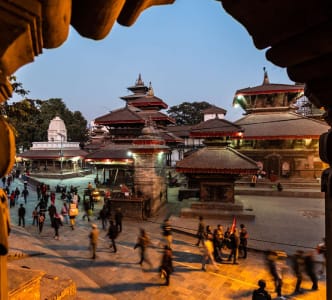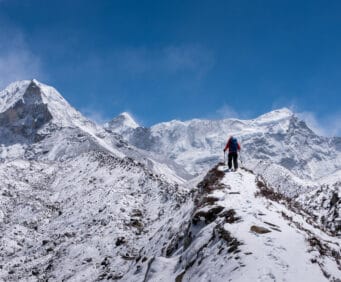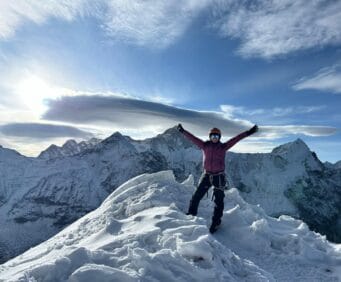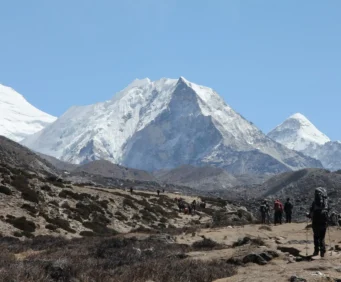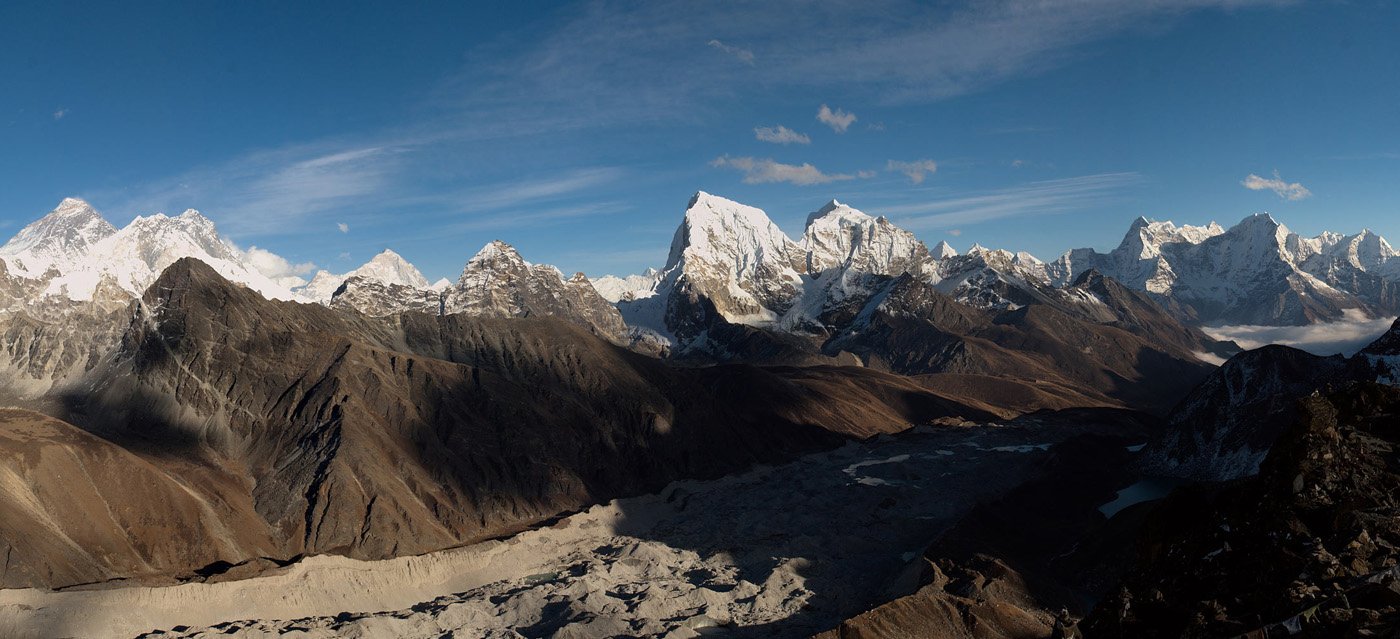
Everest High Pass Trek: Adventure in the Himalayas
1st June, 2025 - Posted By: Himalayan AbodeThe Everest High Pass Trek stands as one of Nepal’s most challenging and rewarding trekking adventures, offering an incomparable blend of high-altitude mountain passes, panoramic Himalayan vistas, remote Sherpa villages, and pristine glacial lakes. This comprehensive guide covers every aspect of the Everest High Pass Trek, ensuring you are fully prepared for the journey of a lifetime.
What Is the Everest High Pass Trek?
The Everest High Pass Trek is a circuit route in the Everest region that crosses three of the highest and most spectacular passes in the Himalayas: Kongma La (5,535m), Cho La (5,420m), and Renjo La (5,360m)1. Unlike the classic Everest Base Camp trek, this route ventures into remote valleys and less-traveled trails, offering a more immersive and adventurous experience.
Why Choose the Everest High Pass Trek?
Ultimate Challenge and Reward
This trek is perfect for experienced trekkers seeking a physically demanding adventure. The combination of high-altitude passes, rugged terrain, and variable weather makes it a true test of endurance and determination1.
Unmatched Scenery
From the turquoise Gokyo Lakes to the dramatic glaciers and the towering peaks of Everest, Lhotse, Makalu, and Cho Oyu, the trek delivers some of the most breathtaking mountain scenery in the world.
Authentic Sherpa Culture
The route passes through quiet Sherpa villages, Buddhist monasteries, and hidden valleys, allowing trekkers to experience the rich culture and hospitality of the Everest region away from the crowds1.
Everest High Pass Trek Route Overview
The trek usually starts with a flight from Kathmandu to Lukla, followed by a journey through Phakding, Namche Bazaar, Tengboche, Dingboche, and Chhukung. The three passes are crossed in a counterclockwise direction:
- Kongma La Pass (5,535m)
The highest and arguably the toughest of the three passes, Kongma La offers dramatic views of the surrounding peaks and glaciers. The ascent is steep and often snowy, demanding good fitness and acclimatization1. - Cho La Pass (5,420m)
Cho La is known for its icy, challenging approach and the stunning views from the top. The descent leads to the famous Gokyo Valley and its shimmering lakes1. - Renjo La Pass (5,360m)
Renjo La is considered the most scenic pass, with panoramic vistas of Everest, Gokyo Lakes, and the Rolwaling Range. The descent takes you to the tranquil Thame Valley, a less-visited gem of the region1.
The trek typically concludes by returning to Namche Bazaar and Lukla.
Detailed Itinerary (Sample 18-Day Trek)
- Day 1: Arrival in Kathmandu
- Day 2: Fly to Lukla, trek to Phakding
- Day 3: Trek to Namche Bazaar
- Day 4: Acclimatization in Namche Bazaar
- Day 5: Trek to Tengboche
- Day 6: Trek to Dingboche
- Day 7: Acclimatization in Dingboche
- Day 8: Trek to Chhukung
- Day 9: Cross Kongma La Pass to Lobuche
- Day 10: Trek to Everest Base Camp, overnight at Gorak Shep
- Day 11: Climb Kala Patthar, trek to Dzongla
- Day 12: Cross Cho La Pass to Gokyo
- Day 13: Explore Gokyo Lakes and Gokyo Ri
- Day 14: Cross Renjo La Pass to Lungden
- Day 15: Trek to Thame
- Day 16: Trek to Namche Bazaar
- Day 17: Trek to Lukla
- Day 18: Fly to Kathmandu
Trekking Highlights
- Three Iconic Passes: Kongma La, Cho La, Renjo La1
- Everest Base Camp and Kala Patthar: Ultimate viewpoints for Everest and surrounding peaks
- Gokyo Lakes: Series of stunning glacial lakes with vibrant turquoise waters
- Ngozumpa Glacier: Nepal’s longest glacier, an impressive river of ice
- Sherpa Villages: Namche Bazaar, Thame, Gokyo, and more
- Monasteries and Culture: Tengboche Monastery and authentic Sherpa traditions
- Wildlife and Flora: Rhododendron forests, Himalayan tahr, musk deer, and diverse birdlife
Physical Demands and Preparation
Fitness Requirements
The Everest High Pass Trek is classified as strenuous. Trekkers should have prior high-altitude trekking experience, strong cardiovascular fitness, and the ability to walk 6–8 hours daily over steep, rocky, and sometimes icy terrain.
Acclimatization
Proper acclimatization is crucial to prevent altitude sickness. The itinerary should include multiple rest days at higher elevations, especially in Namche Bazaar and Dingboche.
Best Time to Trek
- Spring (March–May): Clear skies, rhododendron blooms, moderate temperatures
- Autumn (September–November): Stable weather, excellent mountain views, cool nights
Accommodation and Food
Teahouses
The route is serviced by traditional teahouses offering basic rooms, communal dining, and hearty meals. Facilities become more basic at higher altitudes.
Meals
Expect a mix of Nepali and international dishes: dal bhat (rice and lentils), noodles, soups, pasta, and occasional treats like apple pie. Hydration is key—drink plenty of boiled or treated water.
Essential Gear Checklist
- Four-season sleeping bag
- Down jacket and thermal layers
- Waterproof jacket and pants
- Trekking boots (broken in)
- Gloves, hat, and sunglasses
- Trekking poles
- Headlamp with extra batteries
- Water purification tablets or filter
- First aid kit and personal medications
- High SPF sunscreen and lip balm
Permits and Regulations
Trekkers require the following:
- Sagarmatha National Park Entry Permit
- Khumbu Pasang Lhamu Rural Municipality Permit
These can be obtained in Kathmandu or at the entry points in the Everest region.
Safety Tips
- Ascend gradually and heed acclimatization days
- Stay hydrated and eat well
- Be prepared for sudden weather changes
- Carry a basic first aid kit and know the symptoms of altitude sickness
- Consider hiring a licensed guide and porter for safety and support
Everest High Pass Trek vs. Everest Base Camp Trek
| Feature | Everest High Pass Trek | Everest Base Camp Trek |
|---|---|---|
| Difficulty | Strenuous (3 high passes) | Moderate |
| Altitude | Up to 5,535m | Up to 5,364m |
| Route | Circuit (Lukla–Lukla) | Out-and-back (Lukla–EBC) |
| Major Highlights | 3 passes, Gokyo Lakes, Thame | EBC, Kala Patthar, Tengboche |
| Crowds | Fewer trekkers | Popular, can be crowded |
| Duration | 16–20 days | 12–14 days |
Responsible Trekking and Local Impact
Support local communities by staying in family-run teahouses, hiring local guides and porters, and respecting local customs. Carry out all waste and minimize plastic use to help preserve the fragile Himalayan ecosystem.
Frequently Asked Questions
How difficult is the Everest High Pass Trek?
It is considered one of the most challenging treks in Nepal due to its high passes, long days, and variable weather. Prior trekking experience is highly recommended.
Can I do the trek independently?
While possible, hiring a guide is strongly advised for safety, navigation, and cultural insight.
What is the risk of altitude sickness?
The risk is significant due to the high elevations. Acclimatization and a gradual ascent are essential.
Are there ATMs or Wi-Fi on the route?
ATMs are available in Namche Bazaar, but not beyond. Wi-Fi is available in some teahouses for a fee, but connectivity is unreliable at higher altitudes.
Recent Posts
